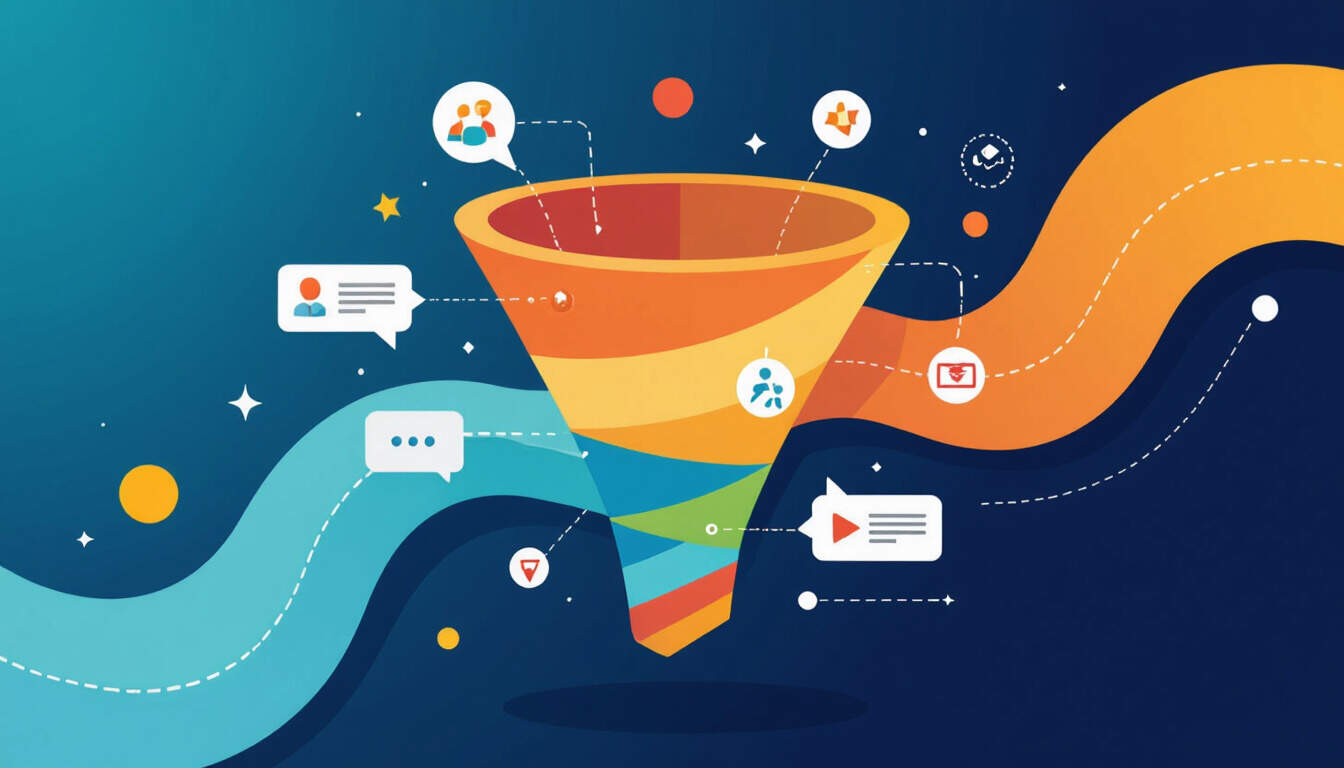Zero-Code Tools for Validating Product Sales Funnels in MVPs
 by Verner Mayer
by Verner Mayer
Discover how zero-code tools simplify the validation of product sales funnels for minimum viable products. This approach helps entrepreneurs test ideas quickly, reduce risks, and gather user feedback without writing code, making innovation more accessible.

Building a product sales funnel is essential for guiding potential customers from awareness to purchase. These tools allow entrepreneurs to create and test funnels efficiently. For instance, zero-code tools make this process straightforward by enabling rapid prototyping.
In the early stages of product development, validating a sales funnel ensures that the idea resonates with users. MVP validation becomes easier with platforms that require no programming knowledge. This method focuses on core functionality to test market fit.
Many startups face challenges in testing sales strategies without technical expertise. Zero-code platforms address this by offering drag-and-drop interfaces for building funnels. Users can set up landing pages, email sequences, and tracking mechanisms in minutes.
One effective strategy involves using visual builders to design funnel stages. For example, tools like those for form creation and analytics integration help map out customer journeys. This approach allows for quick iterations based on real user data.
Consider a scenario where a startup wants to launch an e-commerce product. They can use zero-code solutions to build a simple funnel that includes a sign-up page and a checkout process. By monitoring user interactions, teams gain insights into what works.
Benefits of Zero-Code Approaches
Adopting zero-code tools for sales funnel validation offers several advantages. First, it speeds up the testing phase, allowing teams to launch MVPs faster. This acceleration helps in identifying issues early and refining strategies.
Second, these tools are cost-effective, reducing the need for developers. Entrepreneurs can allocate resources to other areas, such as marketing or customer research. The accessibility of these platforms democratizes innovation for smaller teams.
Finally, zero-code environments promote collaboration. Product managers and non-technical stakeholders can contribute directly, fostering a more inclusive development process. This leads to funnels that better align with user needs.
Step-by-Step Guide to Implementation
To get started, select a zero-code platform that fits your needs. Begin by outlining the key stages of your sales funnel, such as awareness, interest, decision, and action.
- Define your funnel structure: Identify the paths users will take. Start with a basic outline to keep things simple.
- Build prototypes: Use drag-and-drop features to create pages and workflows. Focus on essential elements like calls to action and data collection forms.
- Integrate analytics: Connect tools that track user behavior. This step provides data on drop-off points and conversion rates.
- Test with real users: Launch a small-scale version of your MVP. Gather feedback through surveys or behavior analysis.
- Iterate based on results: Analyze the data collected and make adjustments. Repeat the process until the funnel performs well.
Through this guide, entrepreneurs can validate their sales funnels without extensive resources. The iterative nature of this process ensures continuous improvement.
Real-world applications show success stories from teams that have used these methods. For example, a product manager might test different pricing models within a funnel to see which drives more conversions. Such experiments provide valuable insights quickly.
In practice, zero-code tools enable A/B testing of funnel elements. This technique involves comparing variations to determine the most effective design. By doing so, startups can optimize their approaches based on evidence.
Another aspect is ensuring that funnels are mobile-friendly, as many users access them via devices. Zero-code platforms often include responsive design features, making adaptation seamless.
Overcoming Common Obstacles
While zero-code tools are helpful, users may encounter limitations in customization. However, for MVP purposes, focusing on core features mitigates these issues. The key is to prioritize validation over perfection.
Teams should also focus on data privacy and security when handling user information in funnels. Choosing reputable platforms ensures compliance with standards.
Ultimately, the motivation to use zero-code tools lies in their ability to turn ideas into testable realities. Entrepreneurs who embrace this method often find themselves ahead in the competitive landscape.
By integrating these strategies, product managers can build confidence in their sales funnels. The process not only validates MVPs but also paves the way for scalable growth. With persistence and the right tools, achieving success becomes attainable.
